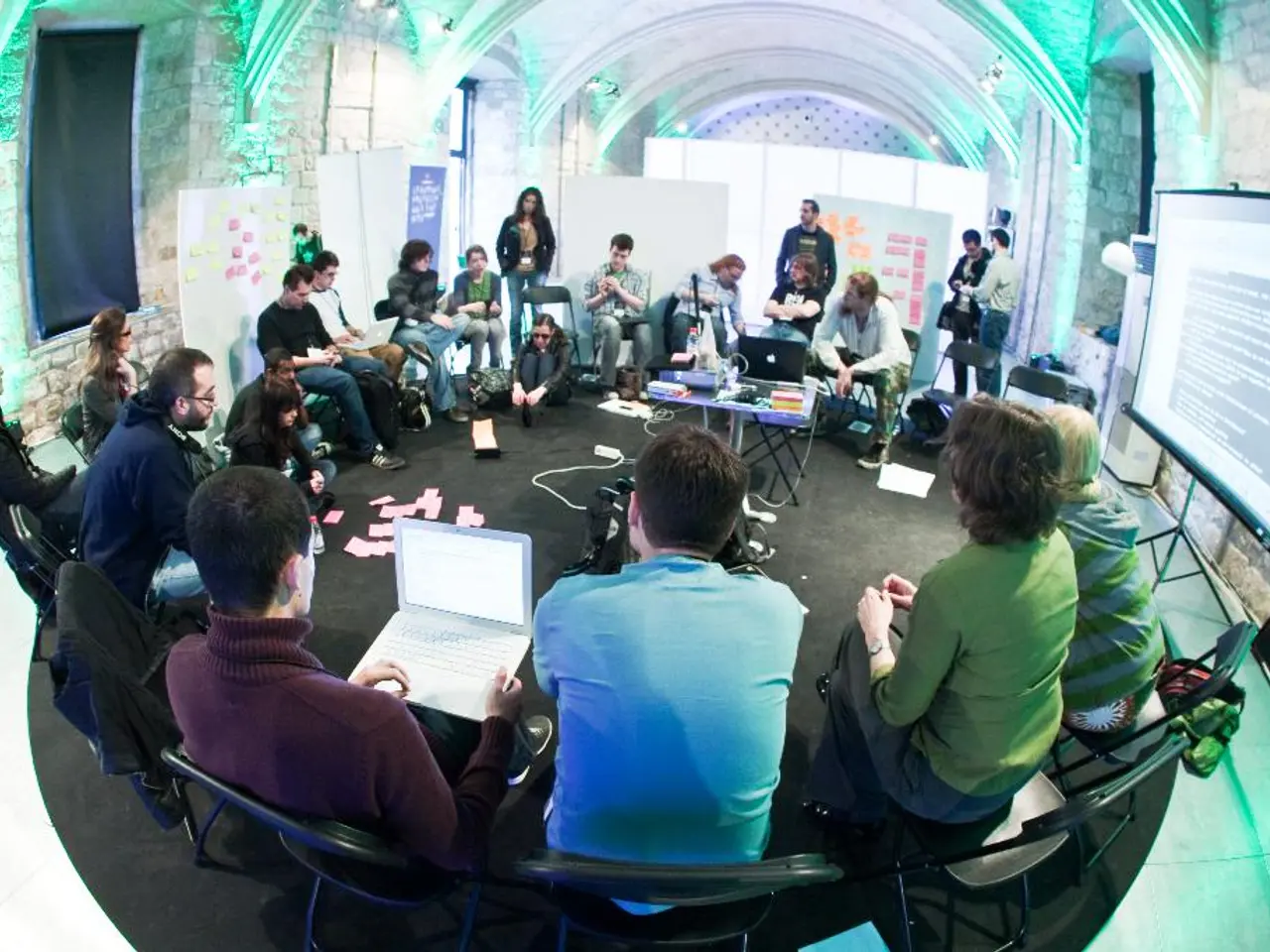Conquering the "Barrier of Repugnance"
The "Wall of Awful," a mental roadblock often experienced by individuals with ADHD or similar conditions, can hinder productivity and make even small tasks seem insurmountable. This emotional wall is built from past struggles and intense emotions, making it difficult to start or complete tasks [3][4]. However, effective strategies can help individuals overcome this barrier and foster sustainable productivity and emotional resilience.
One approach to tackling the "Wall of Awful" is by creating handholds - strategies that remain in place to help individuals climb over the wall each time they need to confront it. This can involve setting clear milestones or mini goals and timing tasks [5]. For instance, Navy SEAL and athlete David Goggins uses reflecting on his successes to help him finish difficult tasks [6].
Another strategy is to acknowledge and validate emotions, recognising that the Wall of Awful is tied to emotional overwhelm, not just poor time management or laziness. This helps reduce self-doubt and shame that fuel the blockage [4]. Breaking tasks into very small, achievable steps also lowers the emotional and cognitive load, making it easier to start without feeling paralyzed [2].
Focusing on interest-based motivation can help bypass dopamine-related difficulties often faced by those with ADHD. Leveraging intrinsic interests or finding elements of tasks that engage curiosity or enjoyment can make tasks seem less daunting [1]. Instead of forcing oneself, it's essential to adopt strategies that bolster a sense of control and choice, such as mindful pauses, self-compassion, and pacing productivity bursts with rest [1][5].
Addressing self-doubt and negative self-talk is also crucial in overcoming the "Wall of Awful." Practising positive self-affirmations and reframing can dismantle the mental roadblock [4]. It can also be helpful to plan out action triggers, such as listening to motivating music or exercising, to overcome the wall when emotions become overwhelming [7].
Lastly, timing tasks can help individuals avoid feeling like they have to dedicate several hours to a project every day or none at all. Setting specific time frames or limits for tasks can provide a solid handhold to overcome the "Wall of Awful" [5]. Making a list of personal successes and rereading it can help elicit positive emotions and overcome the "Wall of Awful" [7].
The "Wall of Awful" analogy was created by Brendan Mahan of ADHD Essentials to describe the difficulty of completing tasks, especially for those with ADHD. By employing these strategies, individuals can shift from forceful productivity attempts to gentle, agency-centered actions that respect emotional realities and build gradual momentum, ultimately fostering sustainable productivity and emotional resilience.
- Bullet journaling, with its focus on setting clear milestones and mini goals, can serve as an effective handhold for tackling the "Wall of Awful."
- In the realm of health-and-wellness and mental-health, recognizing that the "Wall of Awful" is tied to emotional overwhelm, not just poor time management or laziness, is crucial in validating one's emotions.
- Engaging in education-and-self-development, such as learning about personal-growth strategies, can provide valuable insights into overcoming the "Wall of Awful" by adopting intrinsic motivation, positive self-affirmations, and mindful practices.




